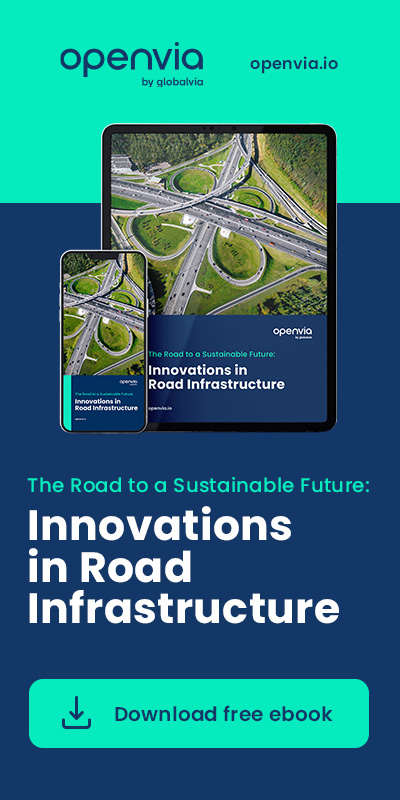Smart mobility and digital infrastructure are rapidly reshaping the future of transportation. As cities grow and traffic increases, road operators face the challenge of optimizing resources and improving efficiency. The integration of digital technologies offers transformative solutions. By harnessing the power of smart systems, road operators can achieve better traffic flow, reduce environmental impact, and offer safer, more responsive travel experiences.
How Digital Infrastructure Enhances Smart Mobility
Digital infrastructure is the foundation of smart mobility. It includes the hardware, software, and communication systems that enable intelligent transportation solutions. Through connected sensors, data analytics, and cloud computing, digital infrastructure allows real-time decision-making and responsive traffic management.
Smart mobility leverages this infrastructure to optimize urban movement. Traffic signals, toll booths, and surveillance systems are now integrated through digital networks. These systems collect data from various sources, enabling accurate predictions and proactive interventions. For example, adaptive traffic signals adjust light cycles based on real-time traffic conditions, significantly reducing congestion.
Road operators benefit from reduced maintenance costs and increased asset longevity by adopting predictive maintenance systems. Digital infrastructure also plays a key role in enhancing road safety. Intelligent cameras and AI-based analysis detect hazards, alert drivers, and even trigger automated emergency responses.
Learn more about the role of digital technologies in transportation on the European Commission’s strategy on digital transport.
Mobility Platforms for Operational Optimization
Mobility platforms are essential tools for optimizing road operations. These platforms integrate data from multiple sources—vehicles, traffic sensors, weather systems, and user apps—into a centralized dashboard. This holistic view supports more informed decision-making and improves coordination among operators.
Modern mobility platforms often operate on an On Cloud platform, allowing seamless access and scalability. Cloud-based systems eliminate the need for expensive infrastructure and offer greater data storage, enhanced security, and easier updates. This flexibility is critical for responding to dynamic transportation needs.
One key advantage of these platforms is their support for traffic management and control. Operators can monitor traffic in real time, identify incidents instantly, and deploy emergency responses more effectively. Cloud-based mobility platforms also enable remote monitoring, helping authorities manage even vast road networks with limited on-site staff.
Mobility-as-a-Service (MaaS) integrations further streamline user experiences. By combining public transit, ride-sharing, and micromobility options into a single platform, road users can plan their trips more efficiently. The result is a smoother, more interconnected transportation ecosystem.Read about how smart road infrastructure is evolving with technology in this article from Intel.
Technological Trends in Roadway Management
Technological innovation is accelerating the transformation of road management. Emerging technologies such as artificial intelligence (AI), machine learning (ML), the Internet of Things (IoT), and edge computing are setting new standards for efficiency and responsiveness.
AI and ML are increasingly used to analyze traffic data, forecast congestion patterns, and optimize routing strategies. These technologies can recognize anomalies and suggest corrective actions faster than human operators. They also support autonomous vehicle navigation and traffic coordination in mixed environments.
IoT devices provide continuous streams of data on road conditions, weather, and traffic flow. Sensors embedded in roads, streetlights, and vehicles create a rich ecosystem of real-time insights. This data is then processed either in the cloud or at the edge—closer to the source—for faster response times.
Edge computing enhances traffic control by reducing latency. It allows critical functions, like accident detection or adaptive signaling, to occur locally, without relying on remote servers. This speed is crucial for minimizing risk and ensuring a smooth flow of traffic.
Blockchain is also emerging in traffic systems for secure data sharing and decentralized infrastructure control. As cybersecurity becomes a concern in digital mobility, blockchain offers solutions for transparency and resilience.To explore further how the digitalization of transport infrastructure is advancing, download this comprehensive report from WSP.
The Interconnection of Digital Services in Mobility
One of the greatest strengths of smart mobility is the interconnection of digital services. When systems across different domains—traffic management, public transport, emergency services, and urban planning—are digitally connected, the entire mobility ecosystem becomes more responsive and efficient.
Integrated platforms enable seamless data sharing. For example, traffic management systems can coordinate with public transportation schedules to avoid overlapping congestion. Real-time incident data can be shared with navigation apps, providing users with updated routing options. Parking availability, electric vehicle charging stations, and weather alerts can be synchronized in one digital space.
This interconnected infrastructure supports a user-centric model of mobility. Citizens benefit from real-time updates, multimodal travel options, and safer roads. Road operators gain a clearer picture of traffic behavior, which helps them allocate resources more strategically.
Cloud technologies are key enablers of this integration. With an On Cloud platform, digital services are more easily connected, updated, and scaled. Cloud computing ensures data consistency and accessibility, empowering road operators to manage systems with greater agility and precision.
Discover how cloud computing is transforming the transportation industry in this article by Teras.
Smart cities also rely on the synergy of digital services. Urban planning, environmental monitoring, and transportation management intersect to create more sustainable and livable environments. This fusion of services is central to innovation in mobility.
For more insights into how smart mobility enhances daily life, check out this overview from Celering.
Additionally, see how smart mobility is revolutionizing the transport sector through this article by the IED.
Conclusion
The convergence of digital infrastructure and smart mobility is redefining road operation efficiency. With the help of mobility platforms, road operators can harness data, optimize traffic flow, and deliver improved user experiences. Technological advancements, including AI, IoT, and On Cloud platforms, are revolutionizing how traffic is managed and controlled. Most importantly, the interconnection of digital services enables a more agile and responsive transportation system.
By embracing these innovations, road operators not only enhance performance but also contribute to more sustainable, safer, and smarter cities. The road ahead is digital—powered by technology and driven by innovation.






